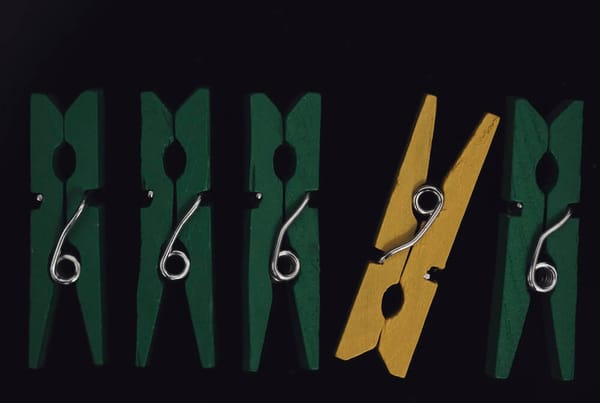“Just input the API key into the POST API field, delete all of the HTML lines above it, and hit refresh,” the customer support agent said.
“Excuse me, W-H-A-T?” I hollered into the phone.
Doesn’t that sound like every customer service call ever? You’d be surprised to know that in a well-functioning company, the answer would be no.
I've previously worked in customer-facing roles for a well-known online catering company, an internet company, an insurance company, and a beauty supplier. I could spend the whole day telling you about the absolute hell that is dealing with conversations about a company’s (or more often a product’s) sub-par performance – but that’s a topic for another time.
More and more often, conversations around product development fall right into customer success’ laps. After all, it's one of the most on-hand, customer-facing teams, so they hear all about it!
So where do the three teams have to “kiss and makeup”? Where do they overlap and what can we do about making the two work together, rather than getting stuck in a quagmire of customer complaints?
What is customer support?
Customer support is the process of assisting customers so that they can use a company’s products or services. Like its sister, customer success, it’s the backbone of any business and a crucial part of any CRM or brand experience strategy. It can be seen as the “glue” that holds all other customer-related activities together, such as marketing and sales.
Most customer service representatives are usually available during standard business hours, but some companies offer “round-the-clock” or 24/7 customer service to accommodate customers in different time zones.
This type of customer service may not be necessary for every company, though, and comes at a cost.
What is customer success?
Customer success is a proactive business strategy that works alongside its more recognisable sister, customer support, to help customers realise value and reach their intended goals with a company's product.
Customer support is considered a more reactionary measure than 'success'; where it aims to fix customer problems when they arise, customer success endeavors to eradicate them by providing the customer with the necessary tools to fully utilize the product. Both functions are equally as important, and work alongside one another with the same company ethos: to provide excellent customer experiences.
What is product development?
Product development is the process of taking an idea and turning it into a tangible product. It might sound simple, but trust me, it’s really not.
Product development is a process that starts with the initial idea and continues through to the finished product. It includes many stages, such as:
- Product design – A prototype or sketch model is developed. This is the basic concept of what the end result will be, including possible features or benefits. This should be directly influenced by market research. A single product can produce hundreds of prototypes.
- Development – Once a prototype is available, it’s time to create the minimum viable product (MVP). The MVP will become the beta version for the testing phase.
- Testing – The beta version should always be organically marketed and sold. Ignore your ads manager. Seriously. Then make sure to get feedback from your early adopters to help guide future development.
- Marketing and sales – There’s really no point in creating it if you’re not going to market your end product and sell it, is there?
- Grow – So it works? Make more of it. Keep improving and testing.
Product development can involve more or fewer steps than this flow, it depends on your business needs. A software or SaaS company will have more and smaller steps in between, whereas a branding and fundraising agency like mine uses this exact flow.
Product development can be aided by competitive intelligence exercises and in tandem with customer success.
How do customer support and product development work together?
The important relationship between customer support and product development for a business is often overlooked. However, these three teams are vital parts of the company and work together to help it grow.
They make great partners because they both need to keep in mind what their customers want and how they can better serve them; this creates what is called a feedback loop.
The product feedback loop
The product feedback loop is a continuous process of collecting, analyzing, and acting on feedback. It’s an essential part of the development process for any product.
In order to create a successful product, it’s important to take into account what customers want and need. This will help you build a better product that people will be more willing to buy.
Now, the most important part of the product feedback loop is to make sure the loop is tracked. In my agency, we use Slack, HoneyBook CRM, and Notion to manage each client’s workflow and keep track of all customer feedback.
Then, at the bi-monthly co-op meeting, we discuss ways we can better fill and fit these needs into our offer and create a better end product for our users.
The importance of customer support and customer success in the modern world
The customer experience is a huge part of the modern world, and companies are realizing that customer success is a big part of that. However, not all companies are doing it well. Here’s how to make sure you’re giving your customers the best experience possible.
The first thing to do is to be proactive with both your customer support, just like you would with your customer success. That means responding quickly and efficiently to support tickets. If they have an issue, try to help them fix it as soon as possible.
Be friendly and courteous with your customers at all times, even if they’re being rude or making unreasonable requests. Remember that it’s not about you – it’s about them and their experience with your company.
If the inquiry can be solved without talking to a person, make it happen. 80% of the calls I took at each of these call centers were simple account and billing changes.
When I take customer support into account for a brand experience exercise, my mantra is, “Customer Support Like Google”.
If you look into Google's support section you’ll find thousands of entries and answered questions with walkthroughs for every single one of their products.
That's a wrap
High-quality customer support and customer success is the backbone of any successful product. It can be difficult to get feedback from customers because they are often too busy to give you a detailed account of what they think about your product. However, due to its problem-solving ethos, customer support is in a unique position to hear feedback directly from customers and pass it on to the product development team.
The product feedback loop starts with customer support and ends with customer success. Customer success is responsible for keeping in touch with customers after they have bought the product, while customer support helps make sure that the customers are satisfied before they buy it in the first place.
With both teams in a friendly rivalry, it’s critical for a company to establish a culture of open communication, tracking feedback, and constantly testing and improving their products to better fit their users’ needs.
What other ways can the two work teams together? Tap into your inner X-Men and hive-mind it!



 Follow us on LinkedIn
Follow us on LinkedIn





